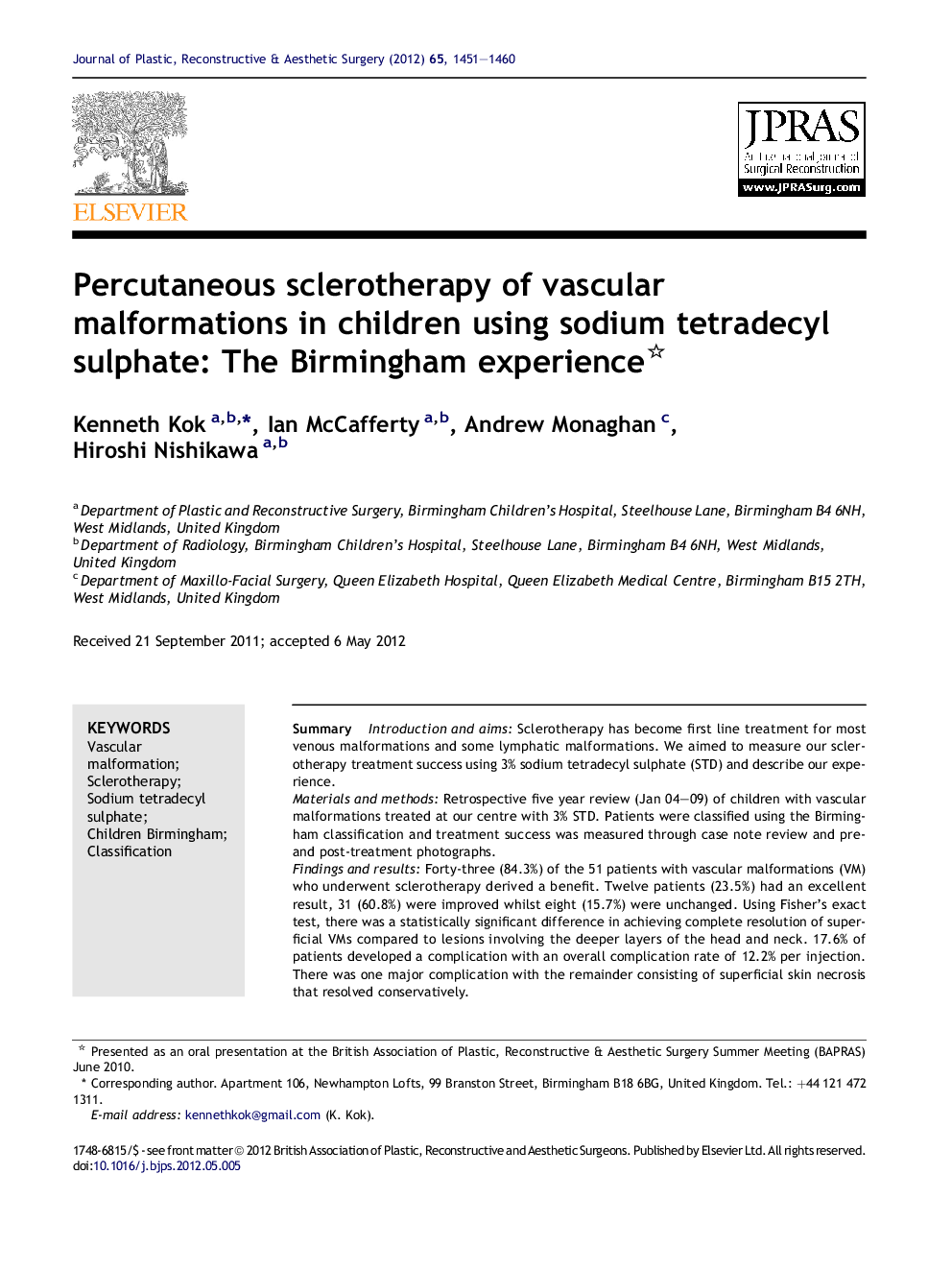| Article ID | Journal | Published Year | Pages | File Type |
|---|---|---|---|---|
| 4118045 | Journal of Plastic, Reconstructive & Aesthetic Surgery | 2012 | 10 Pages |
SummaryIntroduction and aimsSclerotherapy has become first line treatment for most venous malformations and some lymphatic malformations. We aimed to measure our sclerotherapy treatment success using 3% sodium tetradecyl sulphate (STD) and describe our experience.Materials and methodsRetrospective five year review (Jan 04–09) of children with vascular malformations treated at our centre with 3% STD. Patients were classified using the Birmingham classification and treatment success was measured through case note review and pre- and post-treatment photographs.Findings and resultsForty-three (84.3%) of the 51 patients with vascular malformations (VM) who underwent sclerotherapy derived a benefit. Twelve patients (23.5%) had an excellent result, 31 (60.8%) were improved whilst eight (15.7%) were unchanged. Using Fisher's exact test, there was a statistically significant difference in achieving complete resolution of superficial VMs compared to lesions involving the deeper layers of the head and neck. 17.6% of patients developed a complication with an overall complication rate of 12.2% per injection. There was one major complication with the remainder consisting of superficial skin necrosis that resolved conservatively.ConclusionsTreatment with 3% STD sclerotherapy is effective in venous and some lymphatic vascular malformations. It should be considered an important treatment modality within a multi-disciplinary setting in these difficult problems.
